Ryoan-ji Temple is one of the most famous temple in Japan. In 1975, when Elizabeth the 2nd visited Japan officially, she wanted to see the rock garden in Ryoan-ji Temple in Kyoto. The media broadcasted to the world that she eulogized the rock garden. Since then, the rock garden became famous in the world and still now, the rock garden is world famous Japanese style garden.
In 1994, Ryoan-ji Temple was inscribed on the World Heritage List as a Historic Monument of Ancient Kyoto.
The temple was established in 1450 by Katsumoto Hosokawa. Katsumoto Hosokawa who was Muromachi shogun’s deputy got the mountain retreat of Tokudaiji family, noblemen of Heian Period, and changed it to Ryoan-ji Temple by inviting Gensho Giten from Myoshin-ji Temple. Unfortunately, Ryoan-ji Temple burnt down as a result of the Onin War, but Katsumoto’s son, Kaigen, rebuilt the temple. Since then, Ryoan-ji Temple was protected by Hideyoshi Toyotomi and Tokugawa Family as Hosokawa Family’s temple.
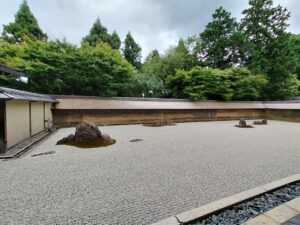 The Rock Garden
The Rock Garden
The rock garden measures only 25m from east to west and 10m from south to north. This is Zen style garden which has no trees and only 15 rocks and white gravel. It is said that the garden was created at the end of Muromachi Period (around 1500) by a highly respected Zen monk, Tokuho Zenketsu. It is also said that you cannot see all 15 rocks from any directions. Please try if you have a chance.
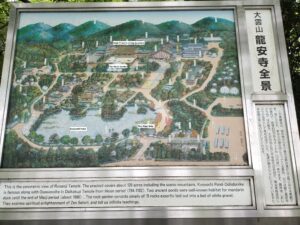 The map of Ryoan-ji Temple
The map of Ryoan-ji Temple
When you visit Ryoan-ji Temple in Kyoto, the temple main gate welcomes you.
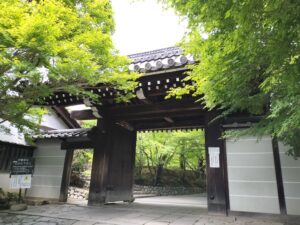 The Temple Main Gate
The Temple Main Gate
The rock garden is located in front of the highest priest’s living quarters. In the quarters, there is dragon painting on the papered sliding doors which is in raging waves and in clouds and smoke grabbing pearl of wisdom. This beautiful painting was donated by Morihiro Hosokawa who was the 79th prime minister of Japan. Totally, painting on 32 papered sliding doors were donated and 8 sliding doors out of them are specially exhibited for a limited time.
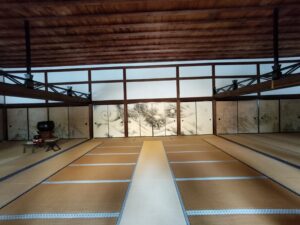 Dragon Painting
Dragon Painting
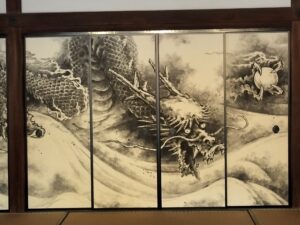
There is a stone washbasin in the back of the quarters. It has Kanji characters, 吾, 唯, 足, 知. The squares in those kanji is located in the center of the washbasin. It means, “I learn only to be contented.”. A person who learns only to be contented is spiritually rich, while the person who does not learn to be contented is spiritually poor even if he or she is materially wealthy. This concept is important in the Zen spirit.
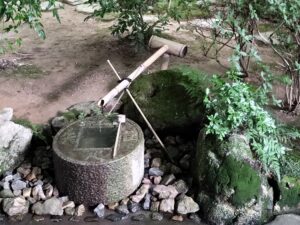 Stone Washbasin, Tsukubai
Stone Washbasin, Tsukubai
The stone washbasin was donated by Mitsukuni Mito, the family head of Mito Tokugawa family.
There is a pond in the center of the precincts of the temple called Kyomyochi Pond. This was made in the late 12th century. After you enjoy the rock garden, you can see this beautiful pond makes you feel relaxed.
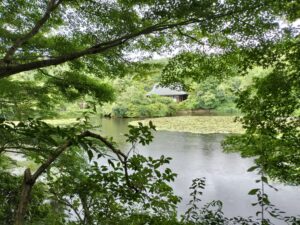 Kyomyochi Pond
Kyomyochi Pond
If you have a chance to visit Kyoto, you would better to visit this temple. You can feel Zen spirit.




Comments